CHẤT LƯỢNG CUỘC SỐNG CỦA NGƯỜI BỆNH PHẪU THUẬT CHẤN THƯƠNG CỘT SỐNG NGỰC THẮT LƯNG BẰNG PHƯƠNG PHÁP CỐ ĐỊNH CỘT SỐNG VÍT QUA DA
Nội dung chính của bài viết
Tóm tắt
Đặt vấn đề: Chấn thương cột sống ngực thắt lưng có thể để lại di chứng nặng nề nếu không được cấp cứu kịp thời và điều trị đúng phương pháp. Chỉ định phẫu thuật được đặt ra khi bệnh nhân có tình trạng mất vững cột sống và/hoặc chèn ép thần kinh ảnh hưởng đáng kể đến chất lượng cuộc sống của người bệnh. Phẫu thuật ít xâm lấn là một phương pháp rút ngắn thời gian nằm viện, giảm đau và hạn chế các biến chứng phẫu thuật. Đối tượng và phương pháp nghiên cứu: Nghiên cứu hồi cứu trên 112 bệnh nhân chấn thương cột sống mất vững đoạn ngực, thắt lưng không có chèn ép thần kinh được phẫu thuật nẹp vít cột sống qua da tại Bệnh viện Đại học Y Hà Nội trong 4 năm (1/2019-12/2022). Bộ câu hỏi PROMIS được sử dụng để đánh giá chất lượng cuộc sống của người bệnh. Kết quả: 112 bệnh nhân (67 nam, 45 nữ), tuổi trung bình là 51,5±11,4 (21-83). Chất lượng cuộc sống của người bệnh sau phẫu thuật được cải thiện đáng kể dựa trên VAS lưng giảm là 4,7±0,9 xuống 2,04±0,45; người bệnh có sức khỏe thể chất và sức khỏe tinh thần tốt tăng từ 20,4%, 52,8% lên 53,7%, 95,6%. Tổn thương phối hợp và tổn thương nhiều đốt là yếu tố liên quan đến chất lượng cuộc sống sau phẫu thuật (p<0.05). Kết luận: phẫu thuật bắt vít qua da là phương pháp an toàn, hiệu quả, giảm mức độ đau và nâng cao chất lượng cuộc sống của người bệnh chấn thương cột sống phải phẫu thuật
Chi tiết bài viết
Từ khóa
Chấn thương cột sống, phẫu thuật ít xâm lấn, chất lượng cuộc sống
Tài liệu tham khảo
2. Chen X, Song Q, Wang K, et al. Robot- Assisted Minimally Invasive Transforaminal Lumbar Interbody Fusion versus Open Transforaminal Lumbar Interbody Fusion: A Retrospective Matched-Control Analysis for Clinical and Quality-of-Life Outcomes. J Comp Eff Res. 2021;10(10):845-856.
3. Đinh Mạnh Hải. Nghiên Cứu Kết Quả Điều Trị Trượt Đốt Sống Thắt Lưng Bằng Phẫu Thuật Lối Sau Sử Dụng Robot Định vị. Luận Văn Tiến Sỹ y Học, Đại Học Y Hà Nội. 2018; 85.
4. Nygaard OP, Kloster R, Solberg T. Nygaard O.P, Kloster R, Solberg T. Duration of Leg Pain as a Predictor of Outcome after Surgery for Lumbar Disc Herniation: A Prospective Cohort Study with 1-Year Follow up. Journal of Neurosurgery. 2000. J Neurosurg. 2000;92(2 Suppl):131- 134.
5. Pokorny G, Amaral R, Marcelino F, et al. Minimally Invasive versus Open Surgery for Degenerative Lumbar Pathologies:A Systematic Review and Meta-Analysis. Eur Spine J Off Publ Eur Spine Soc Eur Spinal Deform Soc Eur Sect Cerv Spine Res Soc. 2022;31(10):2502-2526.
6. Prabhu MC, et al, (2022), History and Evolution of the Minimally Invasive Transforaminal Lumbar Interbody Fusion. Neurospine 2022;19(3):479-491.
7. Phạm Hồng Huyên. Đánh Giá Chất Lượng Cuộc Sống Người Bệnh Sau Phẫu Thuật Thoát vị Đĩa Đệm Cột Sống Thắt Lưng Tại Bệnh Viện Đại Học Y Hà Nội Năm 2019. Luận Văn Thạc Sĩ; Đại Học Y Hà Nội 2020.
8. Silverplats K, Lind B, Zoëga B, et al. Silverplats Katarina, Lind B, Zoëga B, et al. Clinical Factors of Importance for Outcome after Lumbar Disc Herniation Surgery: Long- Term Follow-up. European Spine Journal: Official Publication of the European Spine Society, the European Spinal Deformity Society, and the European Section of the Cervical Spine Research Society. 2010. Eur Spine J Off Publ Eur Spine Soc Eur Spinal Deform Soc Eur Sect Cerv Spine Res Soc. 2010;19(9):1459-1467.


